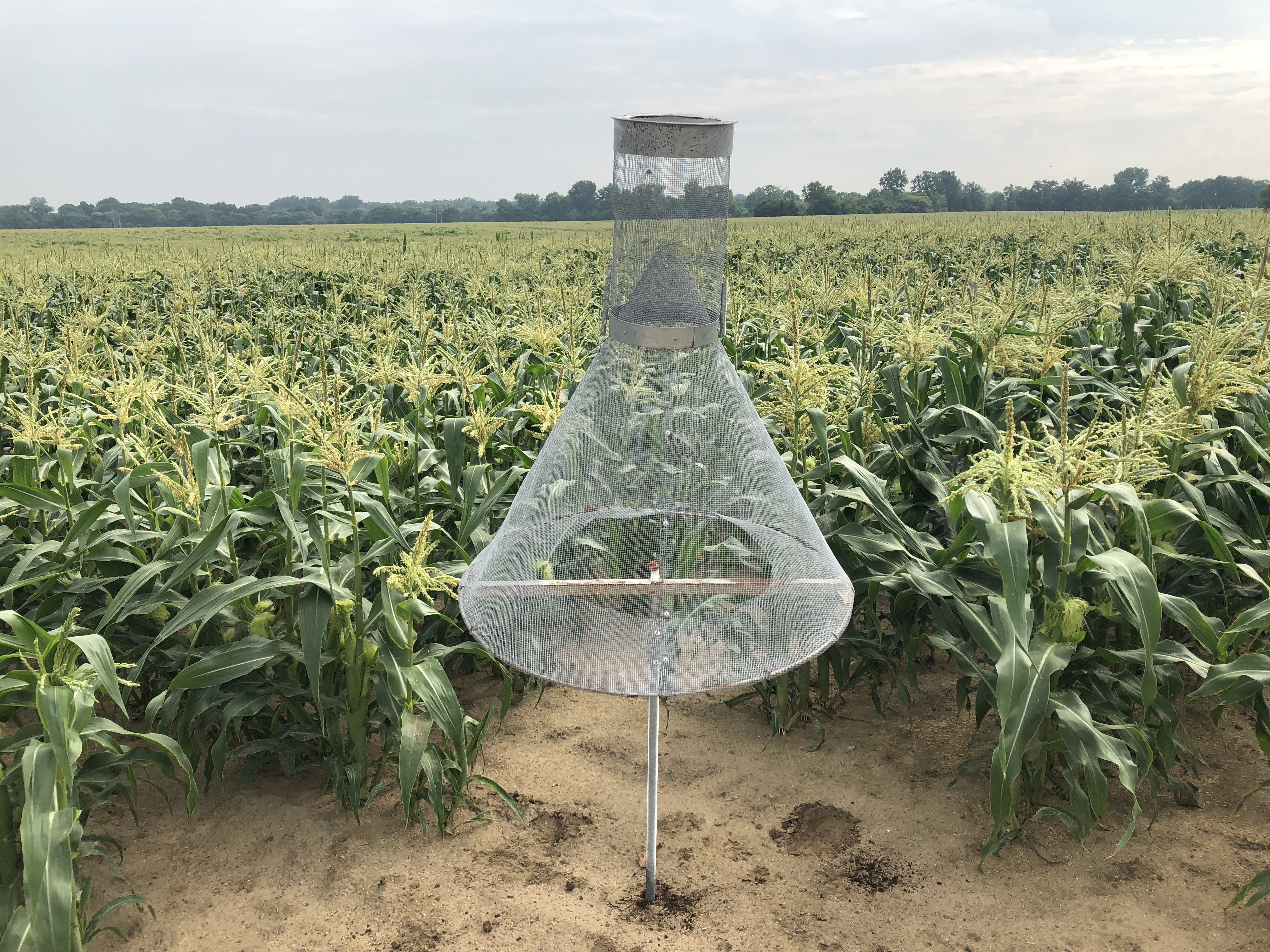Managing corn earworm in an unusual year
There have been reports of wormy sweet corn, and the causes are tied up in our unusual spring and current weather patterns. Learn about corn earworm and tips for managing it in a difficult year.

I’m getting reports from growers of all sizes and management strategies about wormy corn. The culprit is likely corn earworm, which is typically more of a pest in August, but is causing issues early this year for two big reasons.
First, trapping suggests there was sizeable corn earworm flight in our area in late June and early to mid-July. Corn earworm is a pest that migrates to Michigan every year carried on weather fronts, it overwinters in the southern U.S. where it is also a pest of cotton and soybeans.
A second factor is the delayed planting and extended planting period of grain corn locally and throughout the migratory path of corn earworm. Corn earworm moths are attracted to green silks of any corn for egglaying. The delay of silking in grain corn and in some cases the absence of grain corn locally has likely increased pressure on what corn is silking, including sweet corn.
The biology of this pest makes management a challenge. For a review of corn earworm biology, check out the below video.
What can be done going forward?
Corn earworm numbers are going down but could spike again any time weather patterns permit. As late-planted grain corn begins to produce silks, it becomes attractive to incoming flights, and this may reduce pressure in sweet corn. The unusual planting schedule for field corn means that what has worked in the past may not work this year, so it is important to have as much information on corn earworm as possible.
Depending on how much field corn is in your area and where it is at developmentally, moth populations, weather and your market, the spray interval for controlling corn earworm is anywhere from two to seven days. A source of information on potential moth populations is Insect Forecast. This website tracks the weather fronts corn earworm travels in on. You can check the website or you can subscribe to emails and the site will let you know when there’s a chance of increased corn earworm flight. Note that this is just a model, so it isn’t always fully accurate and doesn’t always reflect what’s being seen on the ground.
Traps allow you to find out what the numbers of corn earworm are locally. Various Michigan State University Extension vegetable educators trap for this pest and report on what they are finding in their weekly crop reports found on the MSU Extension Vegetable News page. The best way to know what the risk is on your farm is to place a trap next to your silking corn.

MSU Extension has a series of videos on how to trap for corn earworm and make management decisions based on what you are seeing. These sources of information can help you figure out critical spray windows.
In order to control earworm, products need to be on the silks when the eggs hatches—the caterpillars need to contact insecticides on their trek up the silks and into the husk. Once in the husk, they are protected from insecticides. Drop nozzles help with getting good coverage on the silks. Products need to be applied as there are more chances for egglaying and as silks grow. Silks grow faster and eggs hatch faster in hotter weather, meaning intervals need to be tightened up when temperatures are over 80 degrees Fahrenheit. For a list of products, see the “Midwest Vegetable Production Guide.”
There is a variety of products with different preharvest intervals available. Research suggests that in times when populations are lower, pyrethroids work well. However, there have been reports of pyrethroid resistant corn earworm populations, so during times of very high pressure, using an alternative chemistry, such as Coragen, may be needed for control.



 Print
Print Email
Email

